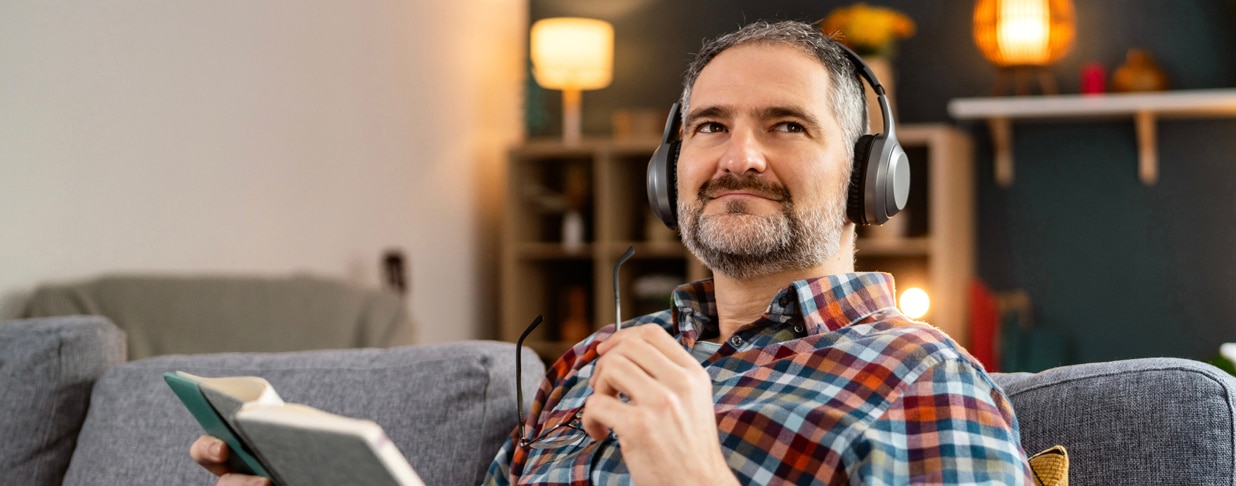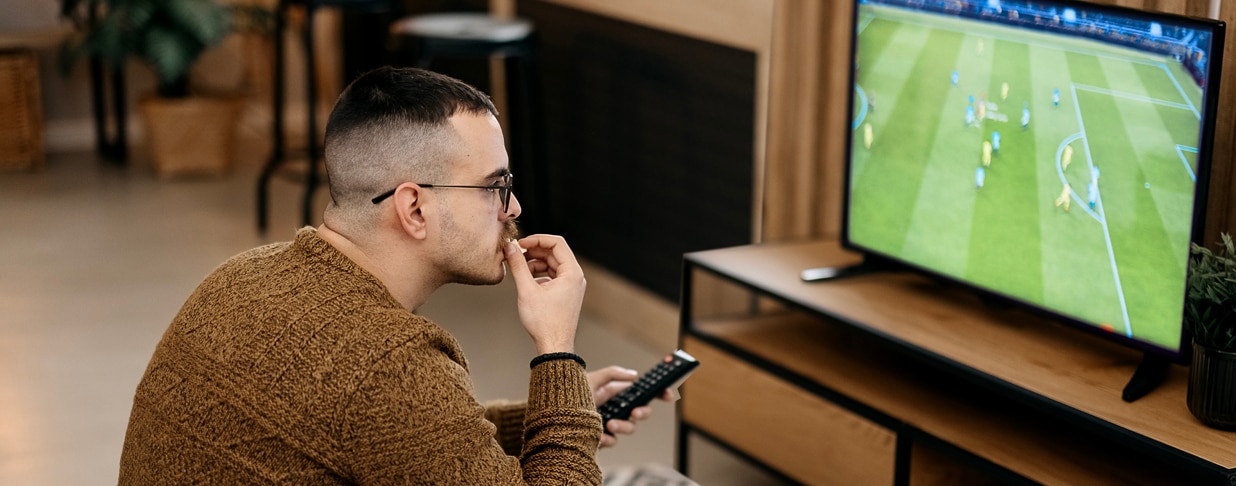Every day, we use our eyes and ears to navigate the world around us. When these senses begin to change with age, so can our quality of life.
In our latest whitepaper, we discuss the science behind how vision and hearing change over time and how Nuance Audio, an innovative new solution can help. Here’s a sneak peek of what’s inside:
Vision and hearing decline with age
As we get older, many adults will notice slight changes in their vision, a condition called presbyopia that usually starts around age 40.1 But age-related hearing loss, or presbycusis is also very common in older adults. Because hearing loss is more gradual, many adults don’t realize that they’ve lost some of their hearing abilities until the problem becomes more severe.2
Vision, hearing and the brain are closely connected
Our brains are crucial in processing and understanding what’s happening around us, but they don’t work alone. They rely on our eyes, ears and other senses to quickly process information about our environment.3 But our senses lose their sharpness as we age, making it harder for our brain to notice key details.4
Vision and hearing problems can impact lifestyle
Staying social is not only important for our mental health but keeping our brains sharp. Those with vision and hearing issues begin to isolate themselves from social activities for fear of communication issues. If they remain untreated, those with dual hearing and vision loss are at a higher risk of developing some form of dementia.5
Hearing aids have challenges
For those with hearing loss, a hearing assistance device (HAD) can help, such as hearing aids.5 But adults often avoid wearing hearing aids for a variety of reasons, such as:
- Not realizing they need hearing aids
- Finding hearing aids uncomfortable or difficult to use6
- Fear of stigma associated with wearing hearing aids, called the hearing aid effect7
An exciting innovation is here to help
Inspired by the way our sense of vision and hearing are so closely connected, Nuance Audio combines sound engineering with smart eyewear for those with mild to moderate hearing loss. While they might just look like a sleek pair of glasses, these innovative frames are embedded with high quality microphones and micro-speakers.
Watch video: Nuance Audio
How it works8
- Microphones tune into sounds coming from the direction the speaker is looking while reducing background noise
- Audio is transferred to microspeakers and delivered directly to the wearer’s ears without delay
- Users can adjust their listening experience with the Nuance Audio app
See and hear life to the fullest
Vision and hearing may change as we age, but that doesn’t have to diminish our quality of life. Nuance Audio delivers a groundbreaking solution that addresses both challenges while reducing the stigma associated with hearing aids.
The best part? – Nuance Audio may be covered by EyeMed vision benefits.
COMMERCIAL WHITEPAPER: click here
STRATEGIC PARTNER WHITEPAPER: click here
••••••••••
1 “Presbyopia”; Cleveland Clinic; clevelandclinic.org; July, 6, 2023.
2 “Age-Related Hearing Loss”; National Institute on Deafness and Other Communication Disorders; nidcd.nih.gov; March 17, 2023.
3 “Eyes”; Cleveland Clinic; my.clevelandclinic.org; Last reviewed November 15, 2023.
4 “Aging changes in the senses”; MedlinePlus; medlineplus.gov; Last reviewed July 21, 2022.
5 “Take care of your senses: The science behind sensory loss and dementia risk”; National Institute on Aging; nia.nih.gov; January 10, 2023.
6 “Factors Impacting the Use or Rejection of Hearing Aids – A Systematic Review and Meta-Analysis”; National Libray of Medicine; ncbi.nlm.nih.gov; June 12, 2023.
7 “The Hearing Aid Effect in the 2020s: Where Do We Stand?” National Library of Medicine; ncbi.nlm.nih.gov; April 29, 2023.
8 “These glasses double as assistive listening devices that amplify hearing”; All About Vision; allaboutvision.com; April 10, 2024.



